Railway vs. Vercel
At a high level, both Railway and Vercel enable you to deploy your app without the hassle of managing infrastructure. Both platforms share several similarities:
- Git-based automated deployments with support for instant rollbacks.
- Automatic preview environments.
- Built-in observability.
- Autoscaling resources with usage-based pricing.
That said, there are fundamental differences between both platforms, and certain use cases where Railway is a better fit.
Understanding the underlying infrastructure and ideal use cases
Vercel’s infrastructure
Vercel has developed a proprietary deployment model where infrastructure components are derived from the application code (see Framework-defined infrastructure).
At build time, application code is parsed and translated into the necessary infrastructure components. Server-side code is then deployed as serverless functions, powered by AWS under the hood.
To handle scaling, Vercel creates a new function instance for each incoming request with support for concurrent execution within the same instance (see Fluid compute). Over time, functions scale down to zero to save on compute resources.
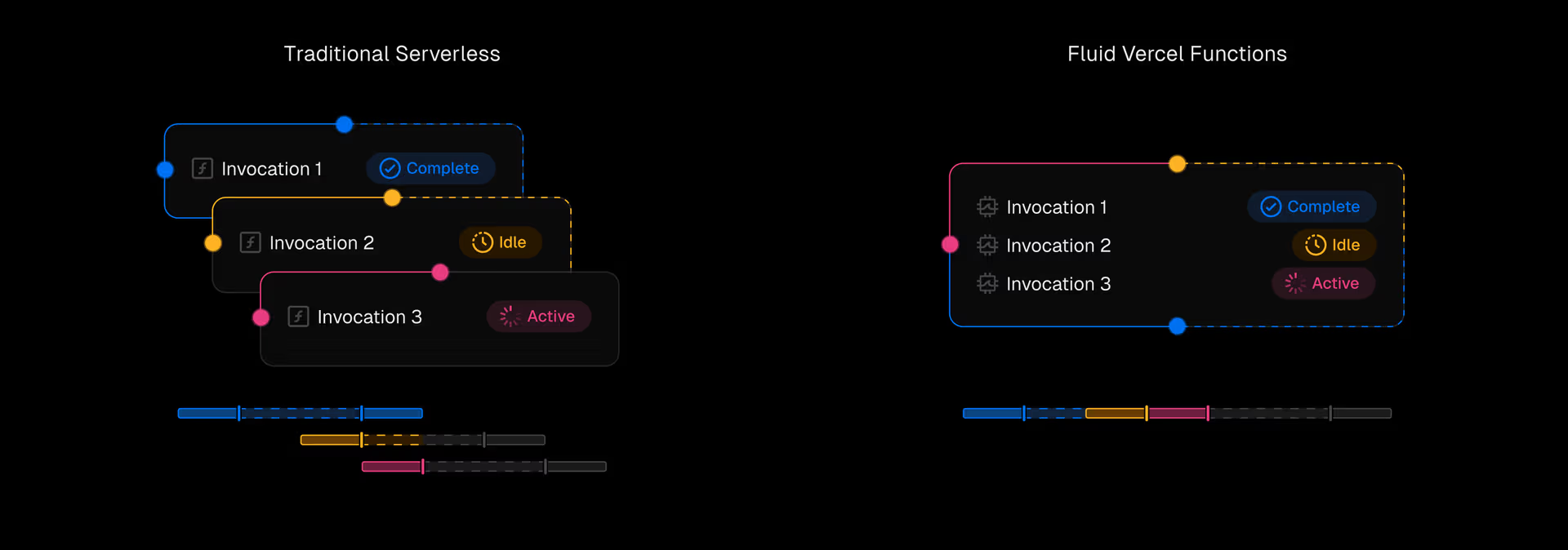
This deployment model abstracts away infrastructure, but introduces limitations:
- Memory limits: the maximum amount of memory per function is 4GB.
- Execution time limit: the maximum amount of time a function can run is 800 seconds (~13.3 minutes).
- Size (after gzip compression): the maximum is 250 MB.
- Cold starts: when a function instance is created for the first time, there’s an amount of added latency. Vercel includes several optimizations, which reduces cold start frequency but won’t completely eliminate them.
If you plan on running long-running workloads such as:
- Data Processing: ETL jobs, large file imports/exports, analytics aggregation.
- Media Processing: Video/audio transcoding, image resizing, thumbnail generation.
- Report Generation: Creating large PDFs, financial reports, user summaries.
- DevOps/Infrastructure: Backups, CI/CD tasks, server provisioning.
- Billing & Finance: Usage calculation, invoice generation, payment retries.
- User Operations: Account deletion, data merging, stat recalculations.
Or if you plan on running workloads that require a persistent connection such as:
- Chat messaging: Live chats, typing indicators.
- Live dashboards: Metrics, analytics, stock tickers.
- Collaboration: Document editing, presence.
- Live tracking: Delivery location updates.
- Push notifications: Instant alerts.
- Voice/video calls: Signaling, status updates.
Then deploying your backend services to Vercel functions will not be the right fit.
Railway’s infrastructure
Railway's underlying infrastructure runs on hardware that’s owned and operated in data centers across the globe. By controlling the hardware, software, and networking stack end to end, the platform delivers best-in-class performance, reliability, and powerful features, all while keeping costs in check.
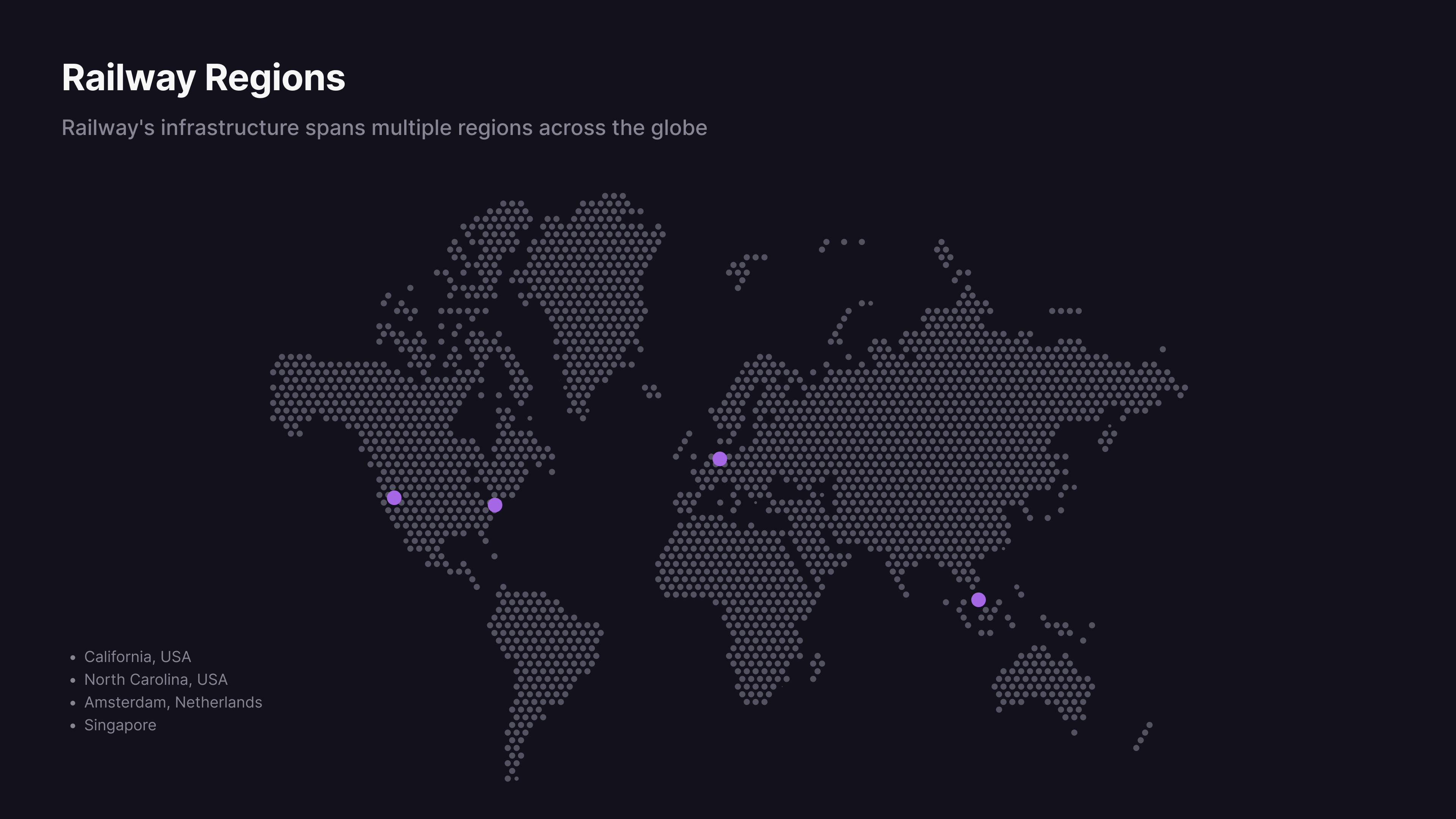
Railway uses a custom builder that takes your source code or Dockerfile and automatically builds and deploys it, without needing configuration.
Your code runs on a long-running server, making it ideal for apps that need to stay running or maintain a persistent connection.
All deployments come with smart defaults out of the box, but you can tweak things as needed. This makes Railway flexible across different runtimes and programming languages.
Each service you deploy can automatically scale up vertically to handle incoming workload. You also get the option to horizontally scale a service by spinning up replicas. Replicas can be deployed in multiple regions simultaneously.
You can also set services to start on a schedule using a crontab expression. This lets you run scripts at specific times and only pay for the time they’re running.
Pricing model differences
Both platforms follow a usage-based pricing model, but are different due to the underlying infrastructure.
Vercel
Vercel functions are billed based on:
- Active CPU: Time your code actively runs in milliseconds
- Provisioned memory: Memory held by the function instance, for the full lifetime of the instance
- Invocations: number of function requests, where you’re billed per request
Each pricing plan includes a certain allocation of these metrics.
This makes it possible for you to pay for what you use. However, since Vercel runs on AWS, the unit economics of the business need to be high to offset the cost of the underlying infrastructure. Those extra costs are then passed down to you as the user, so you end up paying extra for resources such as bandwidth, memory, CPU and storage.
Railway
Railway follows a usage-based pricing model that depends on how long your service runs and the amount of resources it consumes.
Active compute time x compute size (memory and CPU)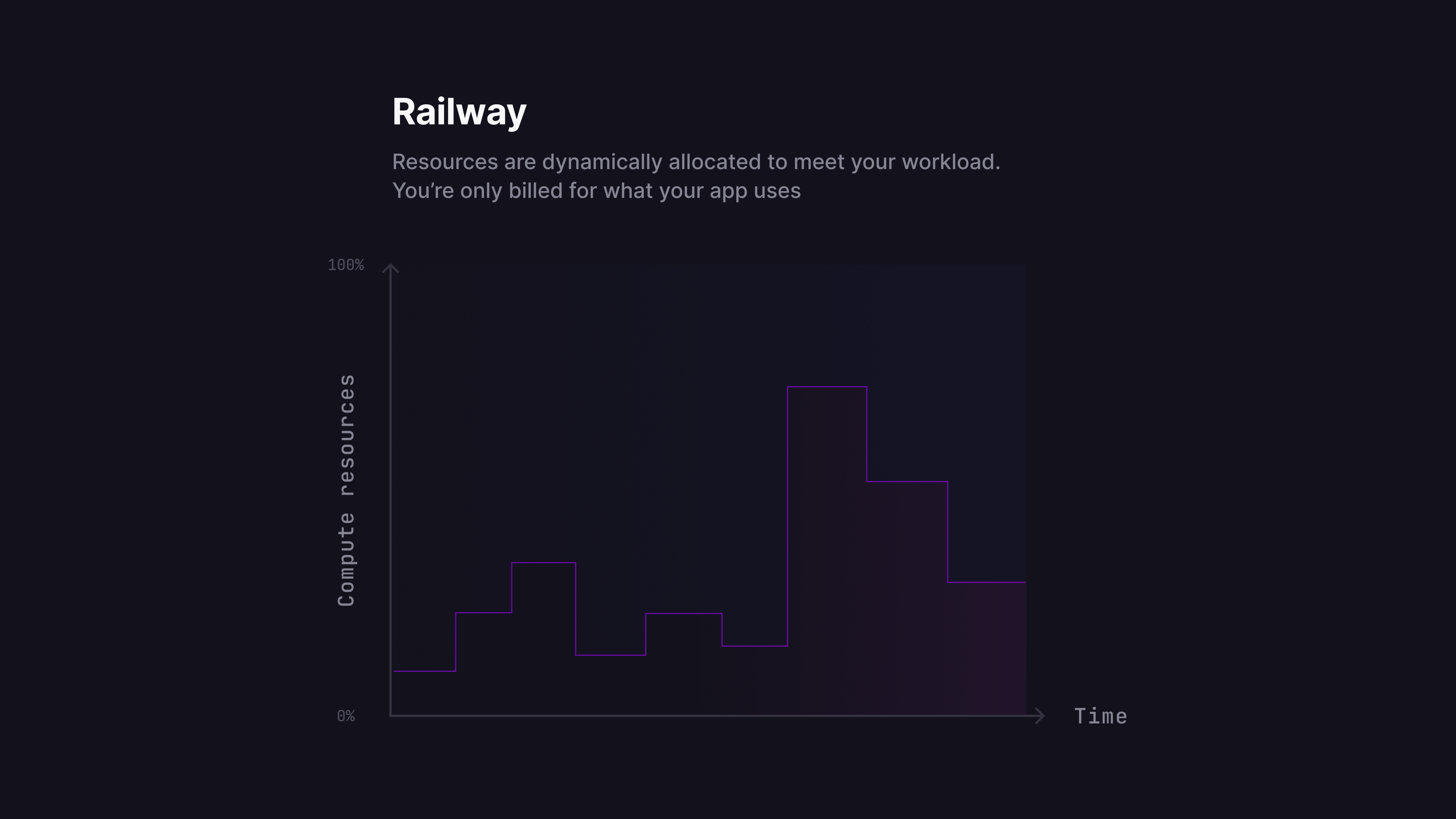
If you spin up multiple replicas for a given service, you’ll only be charged for the active compute time for each replica.
Railway also has a serverless feature, which helps further reduce costs when enabled. When a service has no outbound requests for over 10 minutes, it is automatically put to sleep. While asleep, the service incurs no compute charges. It wakes up on the next incoming request, ensuring seamless reactivation without manual effort. This makes it ideal for sporadic or bursty workloads, giving you the flexibility of a full server with the cost efficiency of serverless, with the benefit of only paying when your code is running.
Deployment experience
Vercel
Managing multiple services
In Vercel, a project maps to a deployed application. If you would like to deploy multiple apps, you’ll do it by creating multiple projects.
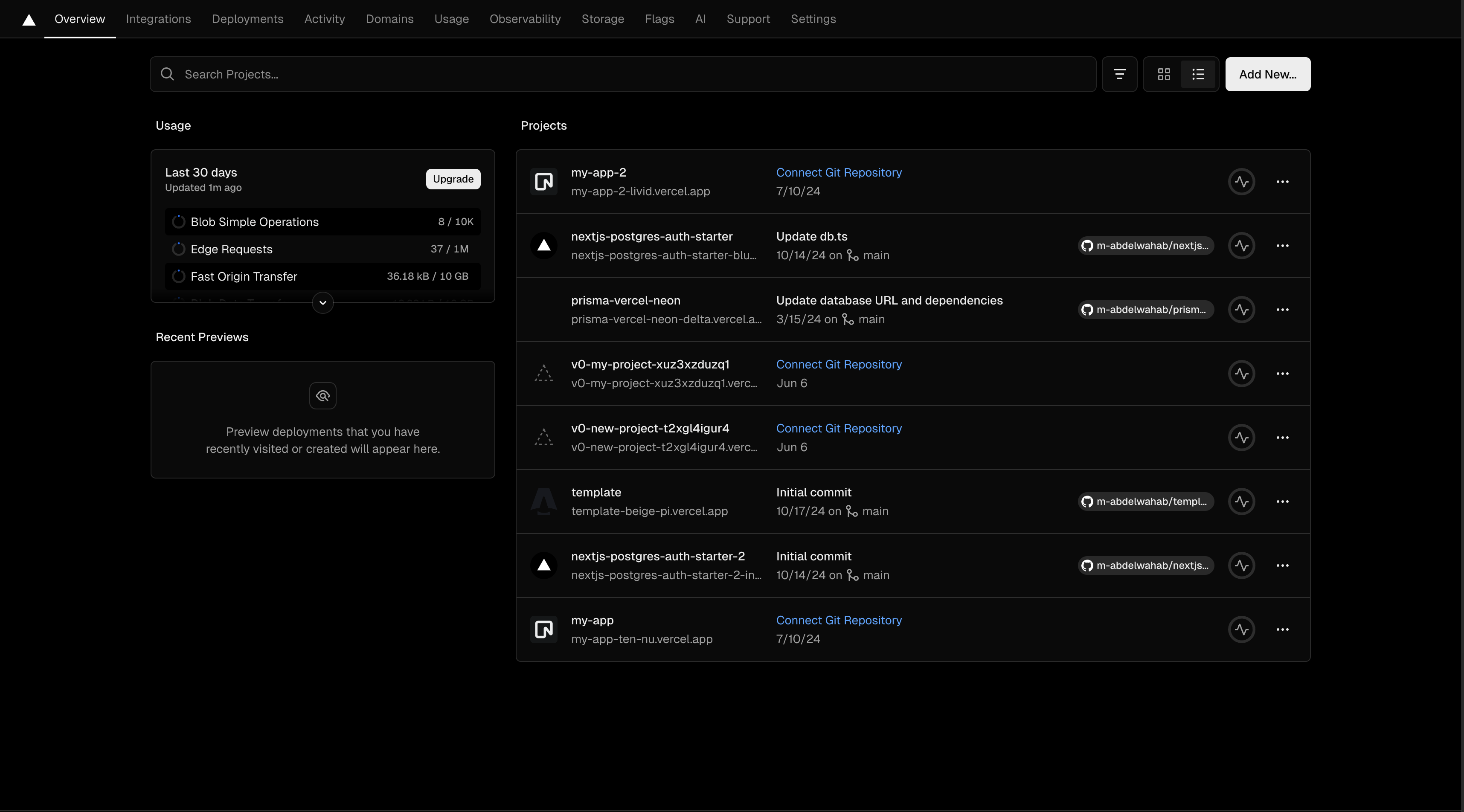
Integrating your application with external services
If you would like to integrate your app with other infrastructure primitives (e.g storage solutions for your application’s database, caching, analytical storage, etc.), you can do it through the Vercel marketplace.
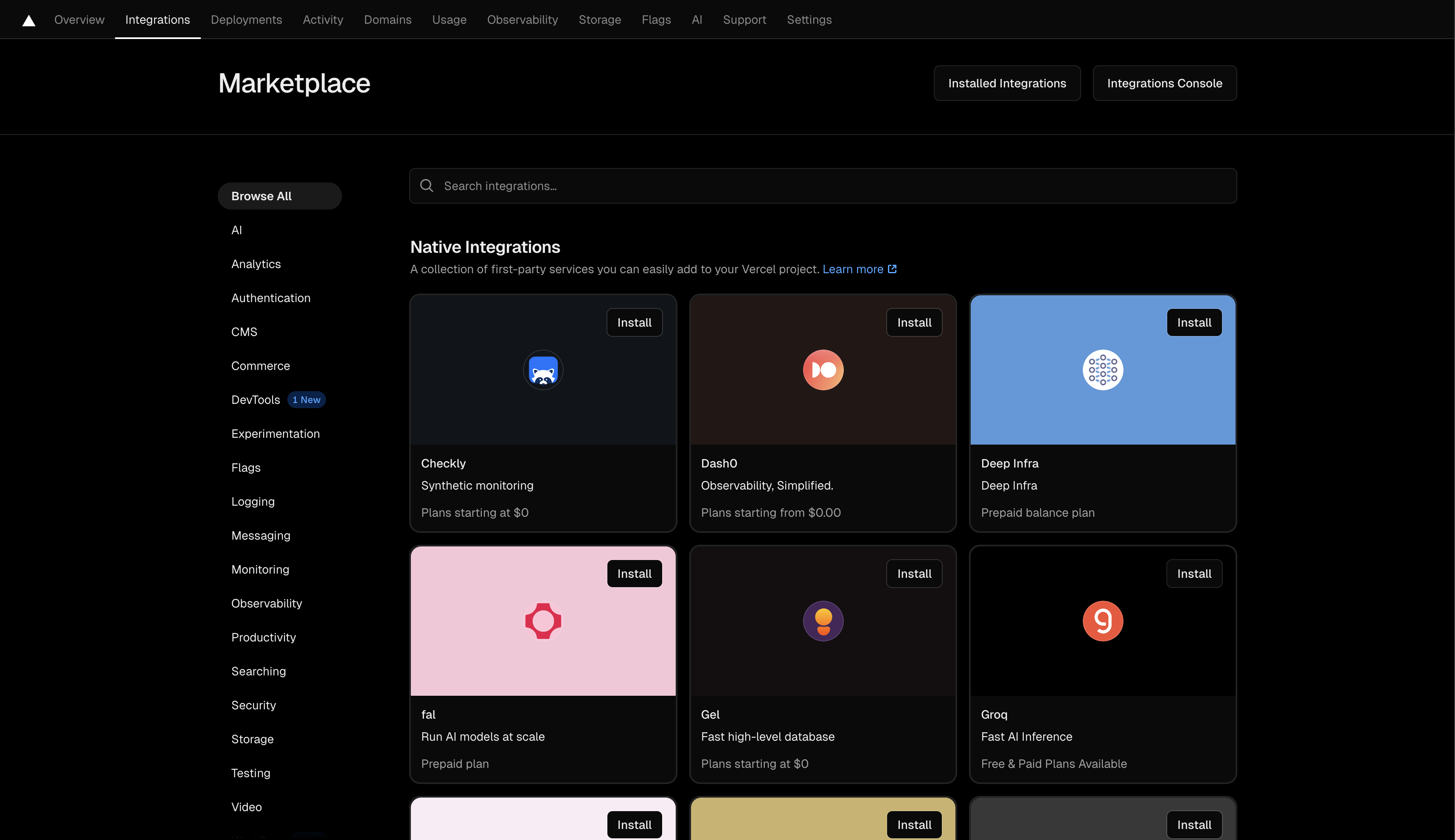
This gives you an integrated billing experience, however managing services is still done by accessing the original service provider. Making it necessary to switch back and forth between different dashboards when you’re building your app.
Railway
Managing projects
In Railway, a project is a collection of services and databases. This can include frontend, API, background workers, API, analytics database, queues and so much more. All in a unified deployment experience that supports real-time collaboration.
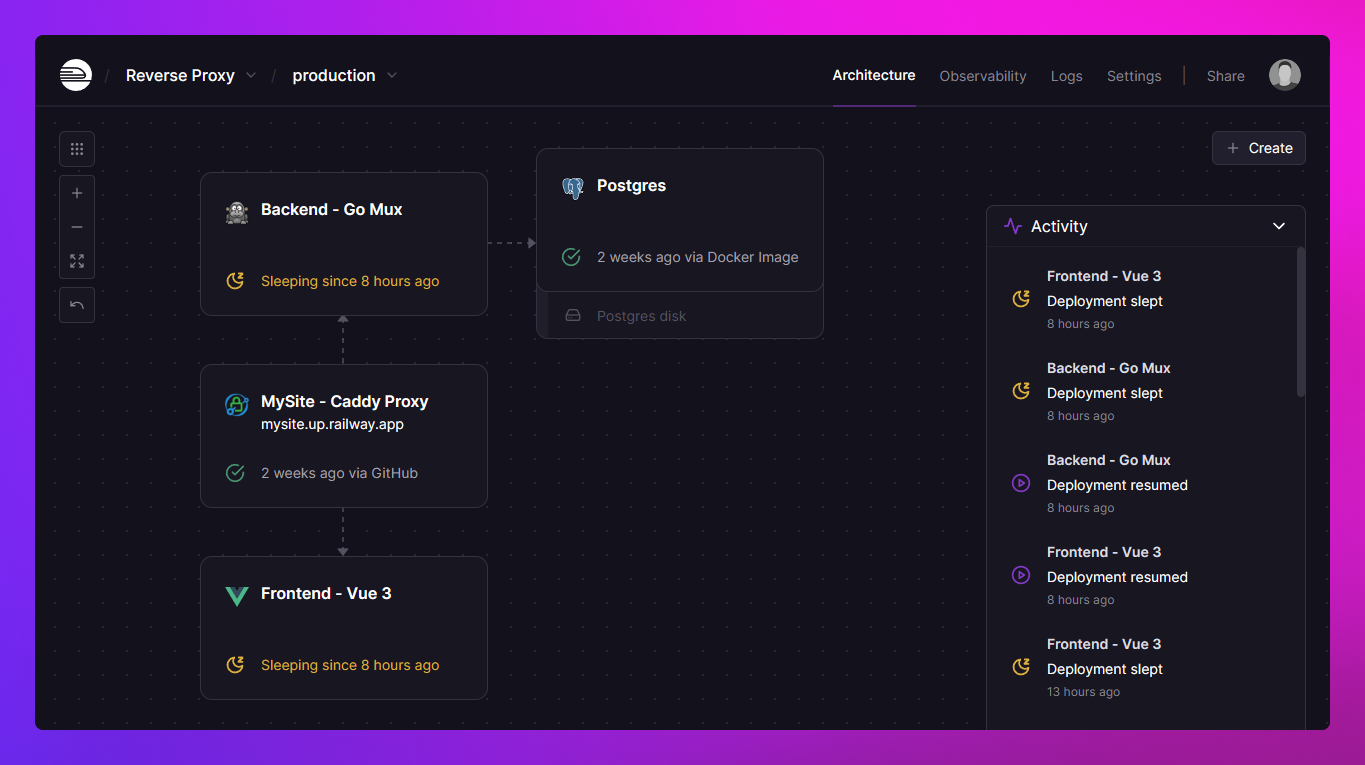
Databases
Additionally, Railway has first-class support for Databases. You can one-click deploy any open-source database:
- Relational: Postgres, MySQL
- Analytical: Clickhouse, Timescale
- Key-value: Redis, Dragonfly
- Vector: Chroma, Weviate
- Document: MongoDB
Check out all of the different storage solutions you can deploy.
Template directory
Finally, Railway offers a template directory that makes it easy to self-host open-source projects with just a few clicks. If you publish a template and others deploy it in their projects, you’ll earn a 50% kickback of their usage costs.
Check out all templates at railway.com/deploy
Summary
| Feature | Railway | Vercel |
|---|---|---|
| Infrastructure Model | Long-running servers on dedicated hardware | Serverless functions on AWS |
| Scaling | Vertical + horizontal scaling with replicas | Scales via stateless function instances |
| Persistent Connections | ✅ Yes (sockets, live updates, real-time apps) | ❌ Unsupported |
| Cold Starts | ❌ No cold starts | ⚠️ Possible cold starts (with optimizations) |
| Max Memory Limit | Up to full machine capacity | 4GB per function |
| Execution Time Limit | Unlimited (as long as the process runs) | 800 seconds (13.3 minutes) |
| Databases | Built-in one-click deployments for major databases | Integrated via marketplace (external providers) |
| Project Structure | Unified project: multiple services + databases in one | One service per project |
| Usage-Based Billing | Based on compute time and size per replica | Based on CPU time, memory provisioned, and invocations |
| Ideal For | Fullstack apps, real-time apps, backend servers, long-running tasks | Frontend-first apps, short-lived APIs |
| Support for Docker | ✅ Yes | ❌ No (function-based only) |
Migrate from Vercel to Railway
To get started, create an account on Railway. You can sign up for free and receive $5 in credits to try out the platform.
Deploying your app
- “Choose Deploy from GitHub repo”, connect your GitHub account, and select the repo you would like to deploy.
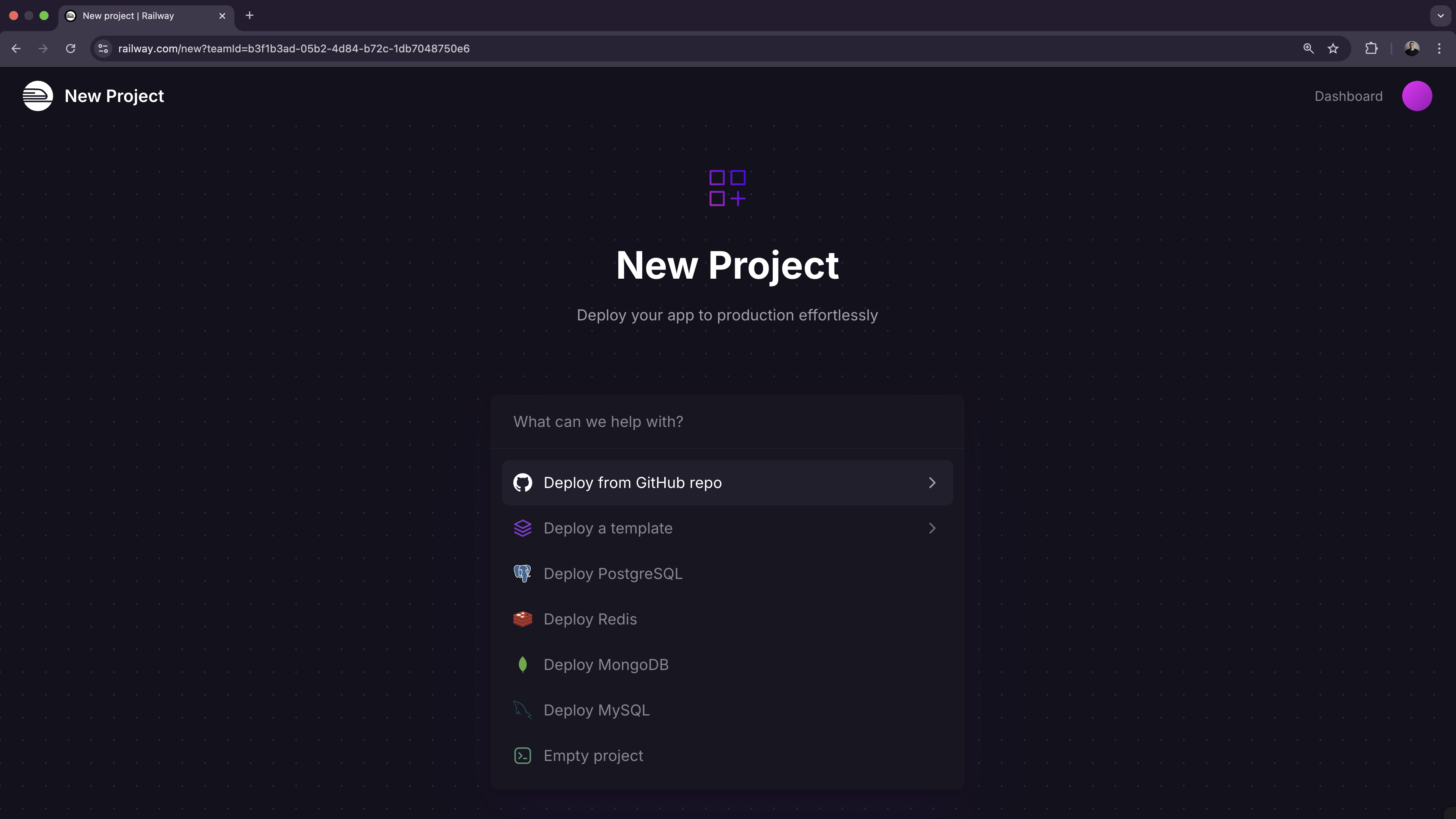
- If your project is using any environment variables or secrets:
- Click on the deployed service.
- Navigate to the “Variables” tab.
- Add a new variable by clicking the “New Variable” button. Alternatively, you can import a
.envfile by clicking “Raw Editor” and adding all variables at once.
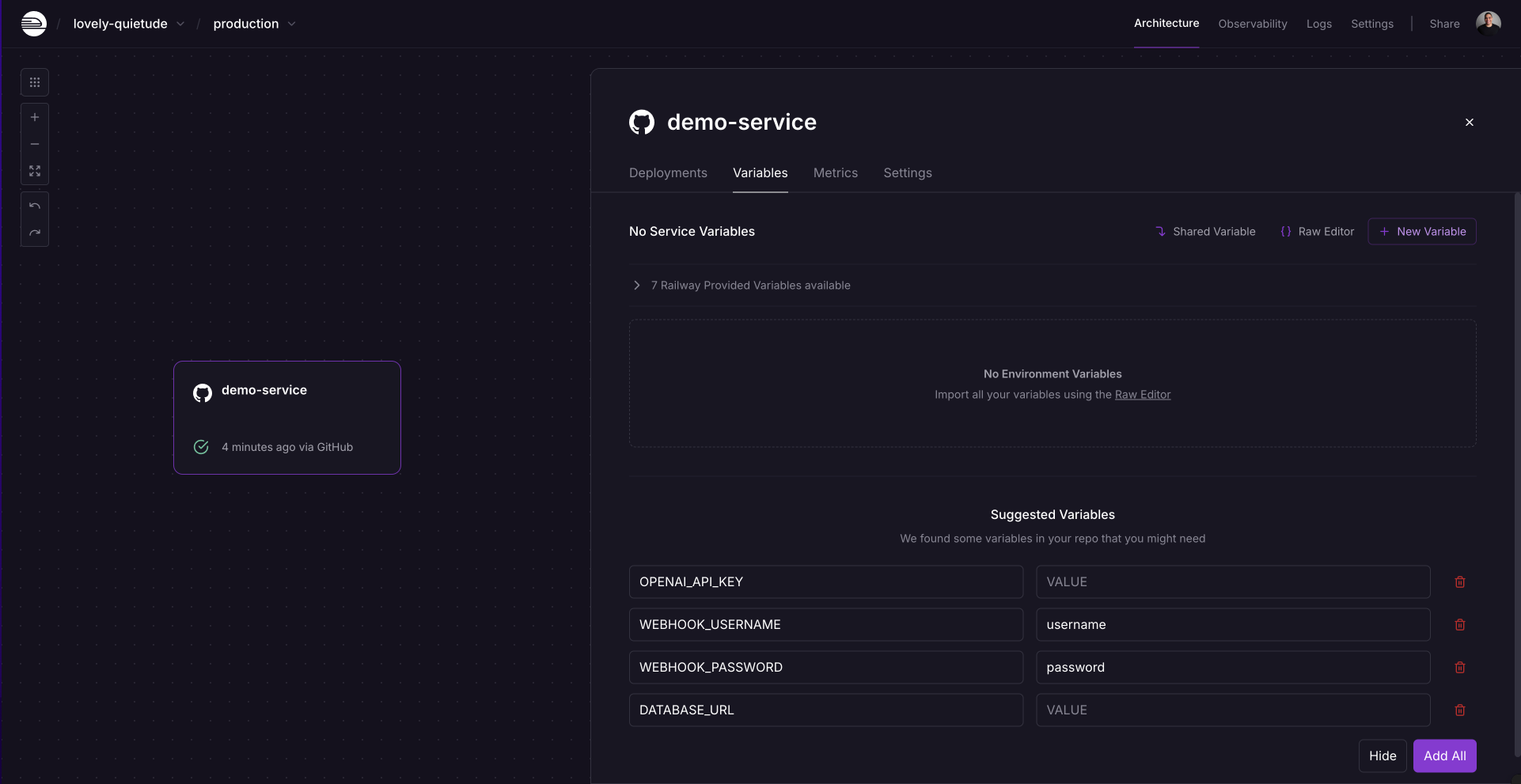
- To make your project accessible over the internet, you will need to configure a domain:
- From the project’s canvas, click on the service you would like to configure.
- Navigate to the “Settings” tab.
- Go to the “Networking” section.
- You can either:
- Generate a Railway service domain: this will make your app available under a
.up.railway.appdomain. - Add a custom domain: follow the DNS configuration steps.
- Generate a Railway service domain: this will make your app available under a
Need help or have questions?
If you need help along the way, the Railway Discord and Help Station are great resources to get support from the team and community.
Working with a larger workload or have specific requirements? Book a call with the Railway team to explore how we can best support your project.
Edit this file on GitHub